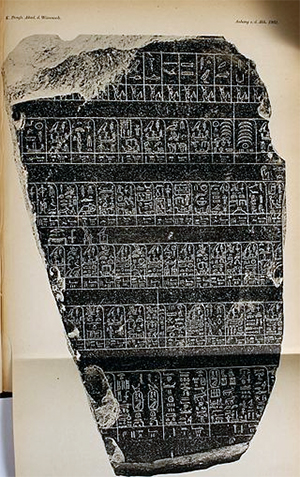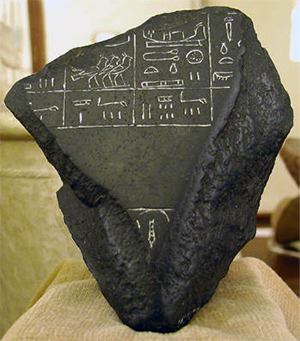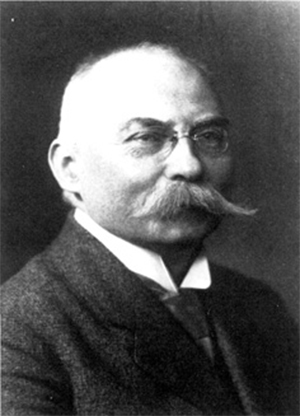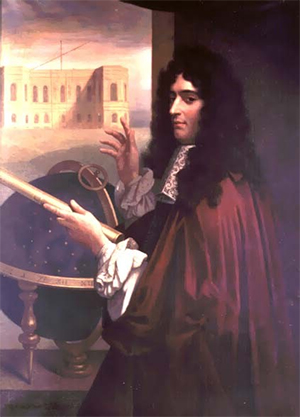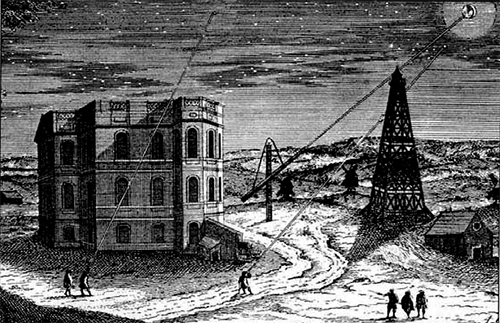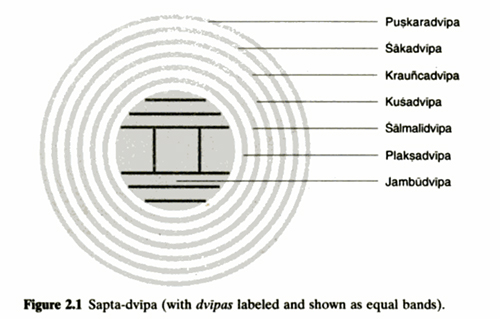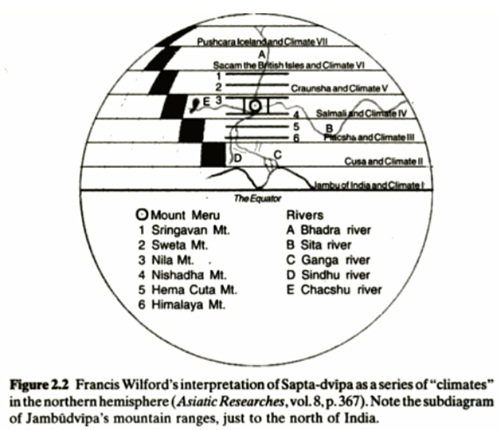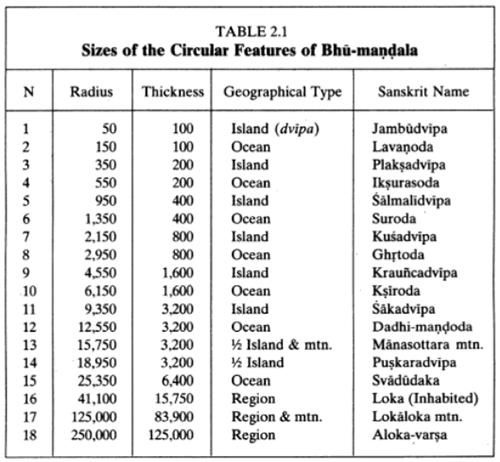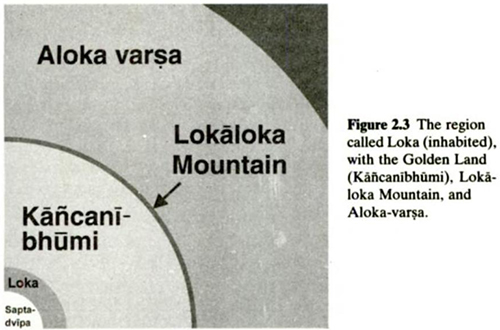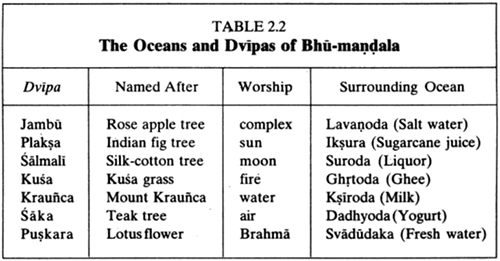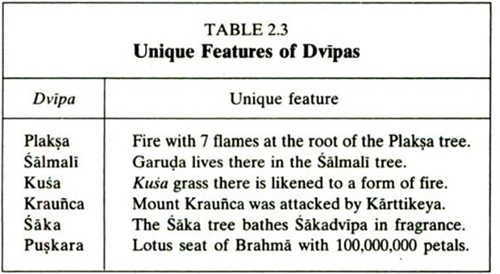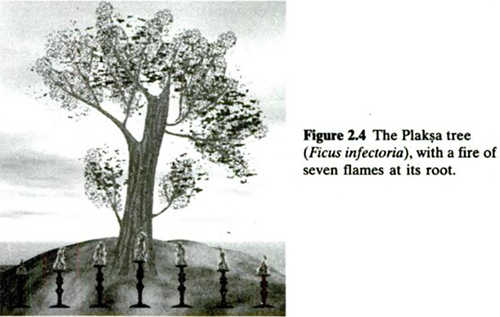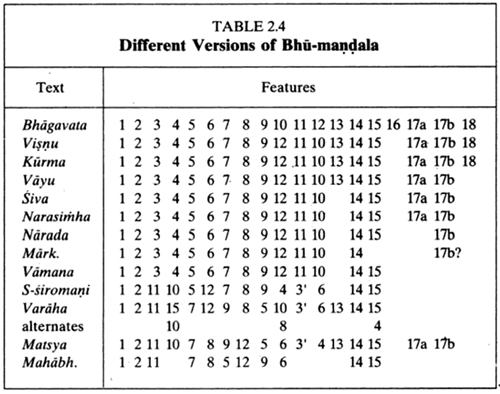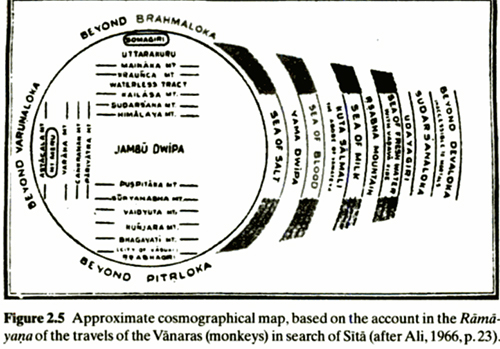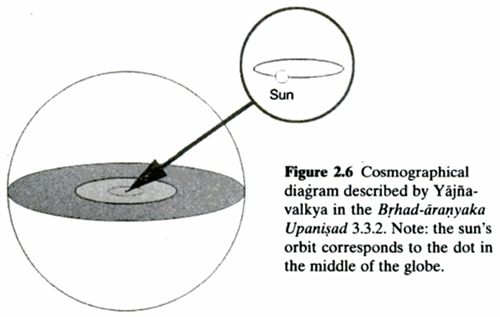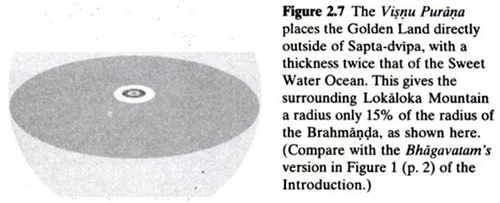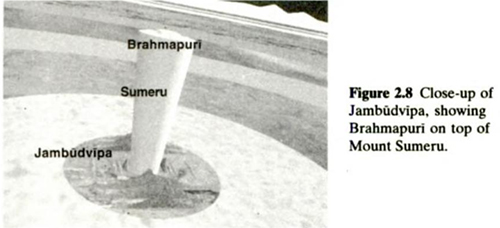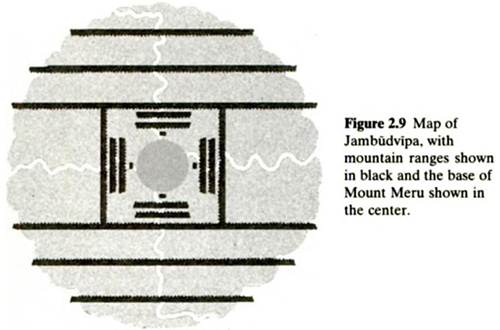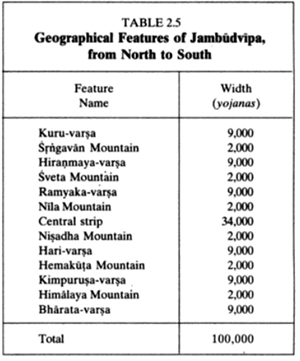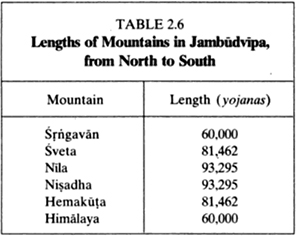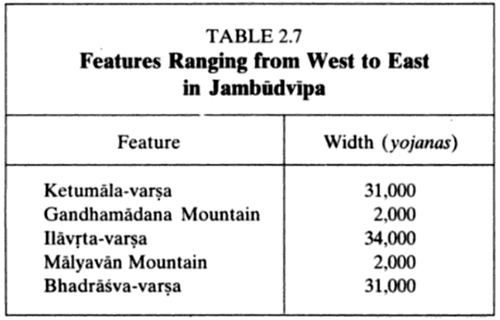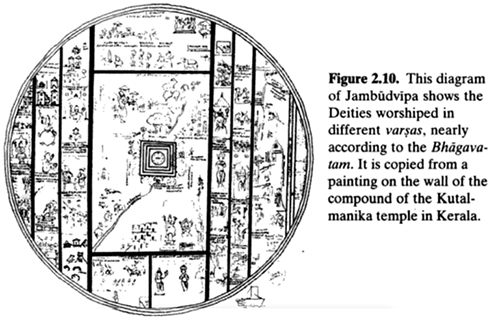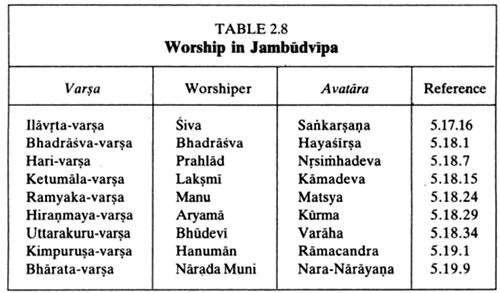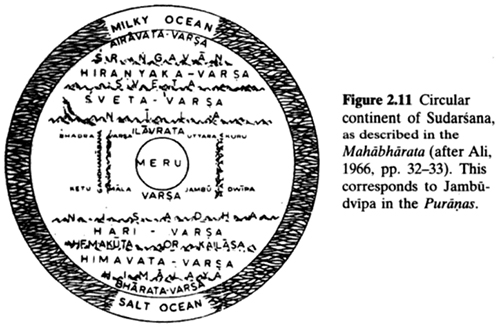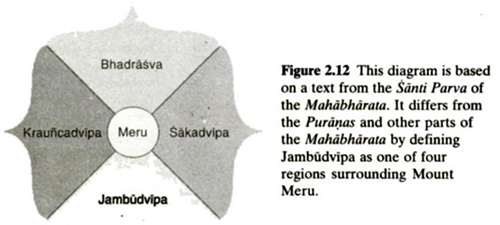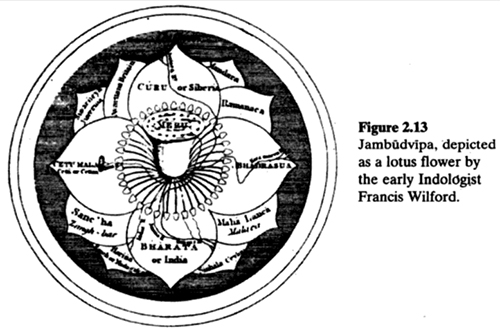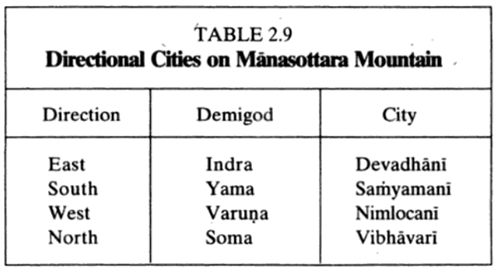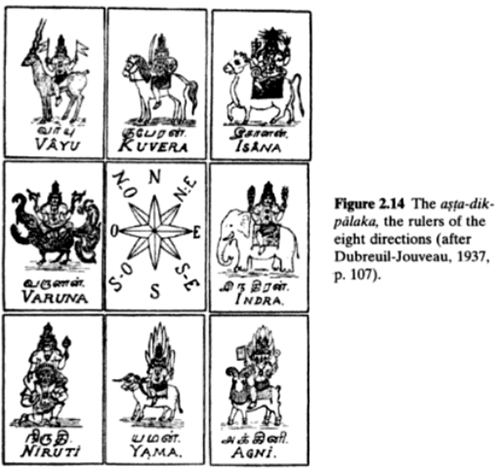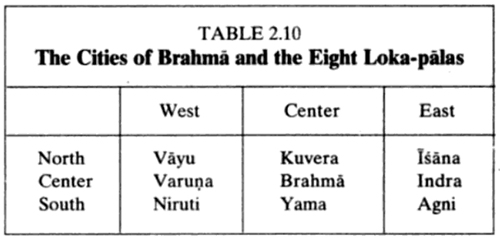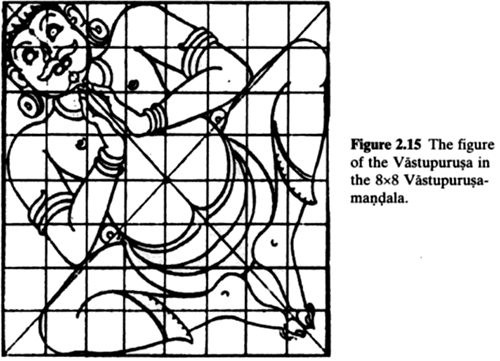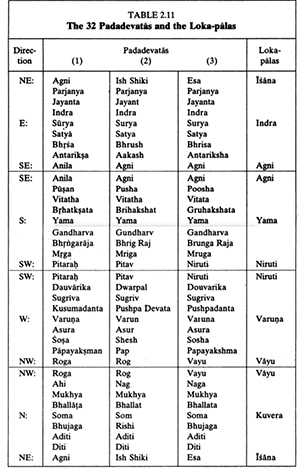Enlarging the bounds of moral philosophy: Why did Isaac Newton conclude the Opticks the way he did?
by John Henry
The Royal Society
© 2016 The Author(s)
Published:05 October 2016https://doi.org/10.1098/rsnr.2016.0011
NOTICE: THIS WORK MAY BE PROTECTED BY COPYRIGHT
YOU ARE REQUIRED TO READ THE COPYRIGHT NOTICE AT THIS LINK BEFORE YOU READ THE FOLLOWING WORK, THAT IS AVAILABLE SOLELY FOR PRIVATE STUDY, SCHOLARSHIP OR RESEARCH PURSUANT TO 17 U.S.C. SECTION 107 AND 108. IN THE EVENT THAT THE LIBRARY DETERMINES THAT UNLAWFUL COPYING OF THIS WORK HAS OCCURRED, THE LIBRARY HAS THE RIGHT TO BLOCK THE I.P. ADDRESS AT WHICH THE UNLAWFUL COPYING APPEARED TO HAVE OCCURRED. THANK YOU FOR RESPECTING THE RIGHTS OF COPYRIGHT OWNERS.
Chapter 5: Ramsay's Ur-Tradition
When D. P. Walker wrote about "ancient theology" or prisca theologia, he firmly linked it to Christianity and Platonism. On the first page of his book, Walker defined the term as follows:By the term "Ancient Theology" I mean a certain tradition of Christian apologetic theology which rests on misdated texts. Many of the early Fathers, in particular Lactantius, Clement of Alexandria and Eusebius, in their apologetic works directed against pagan philosophers, made use of supposedly very ancient texts: Hermetica, Orphica, Sibylline Prophecies, Pythagorean Carmina Aurea, etc., most of which in fact date from the first four centuries of our era. These texts, written by the Ancient Theologians Hermes Trismegistus, Orpheus, Pythagoras, were shown to contain vestiges of the true religion: monotheism, the Trinity, the creation of the world out of nothing through the Word, and so forth. It was from these that Plato took the religious truths to be found in his writings.
Walker described a revival of such "ancient theology" in the Renaissance and in "platonizing theologians from Ficino to Cudworth" who wanted to "integrate Platonism and Neoplatonism into Christianity, so that their own religious and philosophical beliefs might coincide". After the debunking of the genuineness and antiquity of the texts favored by these ancient theologians, the movement ought to have died; but Walker detected "a few isolated survivals" such as Athanasius Kircher, Pierre-Daniel Huet, and the Jesuit figurists of the French China mission. For Walker the last Mohican of this movement, so to say, is Chevalier Andrew Michael RAMSAY (1686-1743), whose views are described in the final chapter of The Ancient Theology. But seen through the lens of our concerns here, one could easily extend this line to various figures in this book, for example, Jean Calmette, John Zephaniah Holwell, Abbe Vincent Mignot, Abraham Hyacinthe Anquetil-Duperron, Guillaume Sainte-Croix, and also to William Jones (App 2009).
Ur-Traditions
To better understand such phenomena we have to go beyond the narrow confines of the Christian God and Platonism. There are many movements that link themselves to some kind of "original," "pure," "genuine" teaching, claim its authority, use it to criticize "degenerate" accretions, and attempt to legitimize their "reform" on its basis. Such links can take a variety of forms. In Chapter 4 we saw how in the eighth and ninth centuries the Buddhist reform movement known as Zen cooked up a lineage of "mind to mind" transmission with the aim of connecting the teaching of the religion's Indian founder figure, Buddha, with their own views. The tuned-up and misdated Forty-Two Sections Sutra that ended up impressing so many people, including its first European translator de Guignes, was one (of course unanticipated) outcome of this strategy. Such "Ur-tradition" movements, as I propose to call them, invariably create a "transmission" scenario of their "original" teaching or revelation; in the case of Zen this consisted in an elaborate invented genealogy with colorful transmission figures like Bodhidharma and "patriarchs" consisting mostly of pious legends. Such invented genealogies and transmissions are embodied in symbols and legends emphasizing the link between the "original" teaching and the movement's doctrine. "Genuine," "oldest" texts are naturally of central importance for such movements, since they tend to regard the purity of teaching as directly proportional to its closeness to origins.
A common characteristic of such "Ur-tradition" movements is a tripartite scheme of "golden age," "degeneration," and "regeneration." The raison d'etre of such movements is the revival of a purportedly most ancient, genuine, "original" teaching after a long period of degeneration. Hence their need to define an "original" teaching, establish a line of its transmission, identify stages and kinds of degeneration, and present themselves as the agent of "regeneration" of the original "ancient" teaching. Such need often arises in a milieu of doctrinal rivalry or in a crisis, for example, when "new" religions or reform movements want to establish and legitimize themselves or when an established religion is threatened by powerful alternatives.
When young Christianity evolved from a Jewish reform movement and was accused of being a "new religion" and an invention, ancient connections were needed to provide legitimacy and add historical weight to the religion. The adoption of the Hebrew Bible as "Old Testament," grimly opposed by some early Christians, linked the young religion and its "New Testament" effectively to the very creation of the world, to paradise, and to the Ur-religion of the first humans in the golden age. Legends, texts, and symbols were created to illustrate this "Old-to-New" link. For example, the savior's cross on Golgotha had to get a pedigree connecting it to the Hebrew Bible's paradise tree; and the original sinner Adam's skull had to be brought via Noah's ark to Palestine in order to get buried on the very hill near Jerusalem where Adam's original sin eventually got expunged by the New Testament's "second Adam" on the cross (Figure 11). Theologians use the word "typology" for such attempts to discover Christian teachings or forebodings thereof in the Old Testament.
Similar links to an "oldest," "purest," and "original" teaching are abundant not only in the history of religions but also, for example, in freemasonry and various "esoteric" movements. They also tend to invent links to an original "founder," "ancient" teachings and texts, lineages, symbols of the original doctrine and its transmission, eminent transmitter figures ("patriarchs"), and so on; and they usually criticize the degeneration of exactly those original and pure teachings that they claim to resuscitate. In such schemes the most ancient texts, symbols, and objects naturally play important roles, particularly if they seem mysterious: pyramids, hieroglyphs, runic letters, ancient texts buried in caves, and divine revelations stored on golden tablets in heaven or in some American prophet's backyard ...
In premodern Europe such "original" teachings were usually associated with Old Testament heroes who had the function of transmitters. A typical example that shows how various ancient religions were integrated in a genealogy linking them to primeval religion as well as its fulfillment in Christianity is Jacques Boulduc's De Ecclesia ante legem ("On the Church before the [Mosaic] Law") of 1626. Boulduc shows in a table how the extremely long lifespans of the patriarchs facilitated transmission: for example, Adam lived for 930 years and could instruct his descendants in person until his sixth-generation Ur-nephew Lamech, Noah's father, was fifty-six years old. Adam's son Seth was 120 years old when the first priestly functions were instituted; 266 years old when his son Enos first offered prayers in a dedicated house; and 800 years old when he took over the supreme pontificate of the "church before the law" at Adam's untimely death. In the second book, Boulduc shows that "all philosophers, both of Greece and of other regions, have their origin in the descendants of the prophet Noah" and includes in this transmission lineage even the "wise rather than malefic Persian magi [Magos Persas non maleficos, sed sapientes]," Egyptian prophets, Gallic druids, the "naked sages of India [Indis Gymnosophistae]," etc. Boulduc took special care to document through numerous quotations from ancient sources that the wise men who were variously called Semai, Semni, Semanai, Semnothei, and Samanaeil "all have their name from Noah's son Shem" and are therefore direct descendants of Noachic pure Ur-religion. The same is true for the Brachmanes of India who were so closely associated with these Samanaei by St. Jerome. Even "our Druids" worshipped "the only true God," believed "in the immortality of the soul" as well as "the resurrection of our bodies," and adored almost all the very God who "at some point in the future will become man through incarnation from a virgin". The correct doctrinal linage of such descendants of Shem is guaranteed by the fact that "after the deluge, Shem brought the original religion of Enos's descendants to renewed blossom [reflorescere fecit]". Boulduc also paid special attention to Enoch, the sixth-generation descendant of Adam who could boast of having lived no less than 308 years in Adam's presence. This excellent patriarch, who at age 365 was prematurely removed from the eyes of the living and has been watching events ever since from his perch in the terrestrial or celestial paradise, had left behind "writings, that is, the book of Enoch, which contains nothing false or absurd". Noah had taken special care to "diligently preserve these writings of Enoch, placing them at the time of the deluge on the ark with no less solicitousness than the bones of Father Adam and some other patriarchs". Boulduc did not know where this famous Book of Enoch ended up, but some well-known passages in scripture specified that it conveyed important information about the activities of angels.
In the second half of the seventeenth century, textual criticism began to undermine the very foundation of such tales, namely, the text of the Old Testament and particularly of its first five books (the Pentateuch). These books had always been attributed to Moses and regarded as the world's oldest extant scripture. But in 1651 Thomas HOBBES (1588-1679) wrote in the third part of his Leviathan that the identity of "the original writers of the several Books of Holy Scripture" was not "made evident by any sufficient testimony of other history, which is the only proof of matter of fact". However, Hobbes did not deny that Moses had contributed some writings: "But though Moses did not compile those books entirely, and in the form we have them; yet he wrote all that which he is there said to have written". By contrast, Isaac LAPEYRERE (1596-1676) -- who wrote earlier than Hobbes and influenced him though his book on the pre-Adamites appeared later -- was far more radical in questioning whether Moses had in fact written any of the first five books of the Old Testament:I know not by what author it is found out, that the Pentateuch is Moses his own copy. It is so reported, but not believed by all. These Reasons make one believe, that those Five Books are not the Originals, but copied out by another. Because Moses is there read to have died. For how could Moses write after his death?
La Peyrere's conclusion was shocking:I need not trouble the reader much further, to prove a thing in itself sufficiently evident, that the five first Books of the Bible were not written by Moses, as is thought. Nor need anyone wonder after this, when he reads many things confus'd and out of order, obscure, deficient, many things omitted and misplaced, when they shall consider with themselves that they are a heap of Copie confusedly taken.
Such textual criticism initiated "a chain of analyses that would end up transforming the evaluation of Scripture from a holy to a profane work". Until La Peyrere, the Bible had always been regarded as a repository of divine revelation communicated by God (the "founder" figure) to a "transmitter" figure (in this case Moses). Unable to reconcile biblical chronology and events with newly discovered facts such as American "Indians" and Chinese historical records, La Peyrere came to the conclusion that the Bible contained not the history of all humankind but only that of a tiny group (namely, the Jews). His rejection of Moses' authorship, of course, also entailed doubts about the Bible's revelation status: if it was indeed revealed by God, then to whom? To a whole group of people whose notes were cut and pasted together to form a rather incoherent creation Story with "many things confus'd and out of order"? At the end of the chain of events described by Popkin, the Bible was no longer "looked upon as Revelation from God, but as tales and beliefs of the primitive Hebrews, to be compared with the tales and beliefs of other Near Eastern groups", leading Thomas Paine to declare: "Take away from Genesis the belief that Moses was the author, on which only the strange belief that it is the word of God has stood, and there remains nothing of Genesis, but an anonymous book of stories, fables and traditionary or invented absurdities or downright lies" .
But such loss of biblical authority was a gradual and painful process that frequently elicited the kind of apologetic intervention evoked by Walker in The Ancient Theology. I doubt that Walker would have gone as far as including the Bible among his pseudepigraphic and misdated texts. Yet if one views phenomena like the Reformation from the perspective of Ur-traditions, the biblical text appears as a (misdated) record of "original teaching" used by reformers like Calvin and Luther in their effort to discard "Romish" degenerations and to restore what they took to be the "genuine," "original" religion revealed by the "founder" God to "transmitters" from Adam and the antediluvian "patriarchs" to Noah, Abraham, Moses, and ultimately the authors of the New Testament. But this kind of Reformation was soon denounced as degenerate in its own right, for example, by the radical English deists who regarded "genuine" Christianity not as revealed to any particular Middle Eastern tribe but as engraved in every human heart. From this perspective, Christianity was -- as Matthew TINDAL (1657-1733) in 1730 succinctly put it in the title of his famous bible of the Deists -- exactly "as Old as Creation," and the holy Gospel was no more than "a Republication of the Religion of Nature" (Tindal 1995). While biblical answers became suspect and alternative creation narratives began to be culled from apparently far more ancient sacred texts, the search for humankind's origins, its "original" religion, and its oldest sacred scriptures had to begin again. In this "crisis of European consciousness," a number of men sought to anchor Europe's drifting worldview anew in the bedrock of remotest antiquity via a solid Ur-tradition chain. Among them was an Englishman who defended the Middle Eastern and biblical framework while dreaming of restoring Noah's pure religion (Isaac Newton)...
Newton's Noachide Religion
Isaac NEWTON (1642-1727) is, of course, known as one of the greatest scientists of all time, but his theological and chronological writings have become the focus of increasing attention. They amount to more than half a million words and are in great part still unpublished; but their study4 points to a central "Ur-tradition" pattern in Newton's worldview. For example, modern specialists point out that "it can be shown how Newton regarded his natural philosophy as an integral part of a radical and comprehensive recovery of the true ancient religion, which had been revealed directly to man by God"; that Newton tried to prove "that his scientific work in the Principia was a rediscovery of the mystical philosophy which had passed to the Egyptians and the Greeks from the Jews"; and that the great scientist "believed that alchemical writings preserved a secret knowledge which had been revealed by God". Newton apparently saw himself as a regenerator of an Ur-wisdom that had been encoded in symbols and transmitted through dark and degenerate ages by a line of eminent men (patriarchs). The italicized words in this sentence are all elements of what I call Ur-traditions.
Newton developed such views over many decades but dared to discuss them only with a few close friends. But the last sentences of his famous Opticks let the reader catch a glimpse:If natural Philosophy in all its Parts, by pursuing this Method, shall at length be perfected, the Bounds of Moral Philosophy will be also enlarged. For so far as we can know by natural Philosophy what is the first Cause, what Power he has over us, and what Benefits we receive from him, so far our Duty towards him, as well as that towards one another, will appear to us by the Light of Nature. And no doubt, if the Worship of false Gods had not blinded the Heathen, their moral Philosophy would have gone farther than to the four Cardinal Virtues; and instead of teaching the Transmigration of Souls, and to worship the Sun and Moon, and dead Heroes, they would have taught us to worship our true Author and Benefactor, as their Ancestors did under the Government of Noah and his Sons before they corrupted themselves.
This closing passage suggests that for Newton the religion of the "golden age" or Ur-religion was preserved by Noah and his sons who were thoroughly monotheistic. Far from being only the religion of the Hebrews, this Ur-religion reigned for a long time everywhere, even in Egypt. But these "blinded heathen" who had initially shared Noah's Ur-religion could barely remember the cardinal virtues because their religion at some point degenerated into the worship of false gods, objects of nature, and dead heroes and into the teaching of the transmigration of souls.
Newton had closely studied Thomas Burnet's Archaeologiae philosophicae of 1692, and though the outlines of his historico-theological system were already developed in 1692, Burnet's influence is unmistakable:Like Burnet, Newton regarded Noah, rather than Abraham or Moses, as the original source of the true religion and learning; consequently, he, too, argued that vestiges of truth could be found among the ancient Gentile peoples as well as that of the Jews since all were descendants of Noah and his sons. Both also shared the belief that modern philosophy was contributing to the recovery of ancient truths which had been distorted after Noah's death.
Newton clearly thought that an initial divine revelation was the ultimate source of all religion, that this Ur-religion was once shared by all ancient peoples. Nevertheless, he sought to root his views firmly in the Old Testament narrative. Monogenesis and the universality of the great flood, for example, were nonnegotiable. Thus, all postdiluvial humans, gentiles and Hebrews alike, originally shared the religion transmitted by Noah and his sons, and vestiges of this religion could be found in all ancient cultures. Newton explained:From all of which it is manifest that a certain general tradition was conserved for a very long time among the Peoples about those things which were passed down most distinctly from Noah and the first men to Abraham and from Abraham to Moses. And hence we can also hope that a history of the times which followed immediately after the flood can be deduced with some degree of truth from the traditions of Peoples.
But Newton did not go as far as taking Chinese chronology into account. He owned and studied Philippe Coupler's 1687 work that was discussed in the previous chapter yet grew convinced that the famous burning of books by Emperor Shih Huangdi in the third century B.C.E. had reduced all ancient Chinese history to legend. In the New College Manuscript Newton wrote,And there are now no histories in China but what were written above 72 years of this conflagration. And therefore the Story that Huan ti founded the monarchy of China 2697 years before Christ is a fable invented to make that Monarchy look ancient. The way of writing used by the Chinese was not fully invented before the days of Confucius the Chinese philosopher & he was born but 551 years before Christ & flourished only in one of the six old kingdoms into which China was then divided.
Newton instead studied Middle Eastern chronologies and used them to defend the Bible as the most reliable source for remote antiquity. Moses had in his opinion originally written a history of creation, a book of the generations of Adam, and the book of the law. Though these oldest books "have long since been lost except what has been transcribed out of them in the Pentateuch now extant" and though the existing text of the Pentateuch was in his opinion redacted by Samuel rather than Moses, Newton remained firmly convinced that the first books of the Old Testament "are by far the oldest records now extant," that the Bible is the most authentic history of the world, and that the Kingdom of Israel was the first large-scale political society with all the attributes of civilization. Manetho of Heliopolis, Berosus the Chaldaean, and others had, like the Persian and Chinese historians, created extravagant chronologies that were infinitely less reliable and old. In a chapter of his Chronology dedicated to the Persian Empire, Newton wrote,We need not then wonder, that the Egyptians have made the kings in the first dynasty of their monarchy, that which was seated at Thebes in the days of David, Solomon, and Rehoboam, so very ancient and so long-lived; since the Persians have done the like to their kings Adar and Hazael, who reigned an hundred years after the death of Solomon, "worshipping them as gods, and boasting of their antiquity, and not knowing," saith Josephus, "that they were but modern."
Newton employed such chronologies that "magnified their antiquities so exceedingly" in a manner that much resembled that of William Jones a century later, namely, to confirm the biblical account and vindicate biblical authority; but Jones was to use the even more hyperbolical Indian chronologies. Newton's final system appeared, as Frank Manuel put it, "as a eulogy of Israel" and is evidence "for his central proposition that the Hebrews were the most ancient civilized people". Though the Bible bestows greater antiquity on the Egyptian and Assyrian royal institutions than on the tribes of Israel, Newton "was able to cling to his idee fixe throughout the revision of the history of antiquity, both in the fragments and in the final Chronology".
Newton's "ancient theology" was thus ... still exclusively rooted in the Middle East and the Bible. Since events before the biblical deluge remained hazy due to the fragmentary character of the Pentateuch and the lack of reliable ancient pagan sources, Newton's history of religions really starts with Noah and his sons. His true religion "most closely resembled that which prevailed at the time of Noah, immediately after the Deluge, before the idolatry -- which to Newton was the root of all evil not only in religion but also in politics and even philosophy -- began to corrupt it". The symbol of this pure original religion is the Temple of Solomon, which not only features the eternal flame on a sacrificial altar at the center but also a geometrically precise representation of the heliocentric solar system.
Newton's "prytanea," sacred cultic places around a perpetual fire, symbolize God's original revelation and are at the source of the transmission line. Cults with prytanea were for Newton the most ancient of all cults. According to him this religion with the sacred fire "seems to have been as well the most universal as ye most ancient of all religions & to have spread into all nations before other religions took place. There are many instances of nations receiving other religions after this but none (that I know) of any nation's receiving this after any other. Nor did ever any other religion which sprang up later become so general as this".
This religion around the prytanea was professed by Noah and his sons.
They spread "the true religion till ye nations corrupted it". This first corruption consisted in forgetting that the symbols in the prytanea (for example, lamps symbolizing heavenly bodies around the central "solar" flame) are symbols, leading men to engage in sidereal worship. It is of interest to note that Newton's history of religion -- and, I might add, Ur-traditions in general -- are intimately linked to the encoding and decoding of symbols. Here the degeneration process begins with a misunderstanding of symbols; and this misunderstanding eventually leads to the worship of dead men and statues, the belief in the transmigration of souls, polytheism, the worship of animals, and other "Egyptian" inventions. In parallel with such religious degeneration, the false geocentric system took hold thanks to a late Egyptian, Ptolemy.
The first major postdiluvial regeneration was due to Moses who, according to Newton, "restored for a time the original true religion that was the common heritage of all mankind". But soon enough the degeneration process began anew, punctuated by calls of prophets for renewal, until Jesus came not to bring a new religion but rather to "restore the original true one" not solely for the Jews but for all mankind. Soon enough, another round of degeneration set in with the Egyptian Athanasius, the doctrine of the Trinity, and Roman Catholic idolatry, which got worse and worse until the Reformation cleaned up some of the mess. But Protestantism and Anglicanism were not immune from corruption either, which is why Newton (who was adamantly opposed to the Trinity) felt the need to call -- in a very muted voice and in heaps of unpublished notes and manuscripts -- for one more restoration of true, pure, Noachic religion and wisdom.
-- The Birth of Orientalism, by Urs App
Abstract
This paper draws attention to the remarkable closing words of Isaac Newton's Optice (1706) and subsequent editions of the Opticks (1718, 1721), and tries to suggest why Newton chose to conclude his book with a puzzling allusion to his own unpublished conclusions about the history of religion. Newton suggests in this concluding passage that the bounds of moral philosophy will be enlarged as natural philosophy is ‘perfected’. Asking what Newton might have had in mind, the paper first considers the idea that he was foreshadowing the ‘moral Newtonianism’ developed later in the eighteenth century; then it considers the idea that he was perhaps pointing to developments in natural theology. Finally, the paper suggests that Newton wanted to at least signal the importance of attempting to recover the true original religion, and perhaps was hinting at his intention to publish his own extensive research on the history of the Church.
Introduction: famous last words?
The closing words of Newton's second astonishingly influential book, Opticks, are truly remarkable even by the standards of the early eighteenth century. The second English edition of 1718 ends like this:
In this third Book I have only begun the Analysis of what remains to be discover'd about Light and its Effects upon the Frame of Nature, hinting several things about it, and leaving the Hints to be examin'd and improv'd by the farther Experiments and Observations of such as are inquisitive. And if natural Philosophy in all its Parts, by pursuing this Method, shall at length be perfected, the Bounds of Moral Philosophy will be also enlarged. For so far as we can know by natural Philosophy what is the first Cause, what Power he has over us, and what Benefits we receive from him, so far our Duty towards him, as well as that towards one another, will appear to us by the Light of Nature. And no doubt, if the Worship of false Gods had not blinded the Heathen, their moral Philosophy would have gone farther than to the four Cardinal Virtues; and instead of teaching the Transmigration of Souls, and to worship the Sun, and Moon, and dead Heroes, they would have taught us to worship our true Author and Benefactor.1
These are the final words of Query 31, and therefore of the Opticks itself, as they appear in the second English edition. Accordingly, this is not to be found at the end of the first edition of 1704, which ends with Query 16.2 The remarkable concern with morality and religion is first introduced in the Latin edition of 1706, in the last of seven new queries added to that edition.3 The Latin version, provided by the translator of the Optice, Samuel Clarke, was presumably based on an English original provided by Newton. The version quoted here, from the 1718 edition, is very close to the Latin, but was probably written in English by Newton.4 Newton made a small, but crucial, addition to the end of this paragraph in the third English edition of 1721. We shall come back later to this addition.
From our perspective, this is a very strange way to wrap up a book of experimental science devoted to optics. Reminding ourselves that this was written long before the secularization of British society, we might suppose that what strikes us as odd would not have seemed so strange to contemporary readers.5 But this kind of explicitly religious ending was by no means required, or expected, for works on optics, or for works on natural philosophy more generally.6 Even to contemporary readers this would have been seen as excessively pious, and a clear sign that the author was driven by his own highly developed religiosity to introduce religious sentiments into a book which, on the face of it, has no special religious implications and no other obvious connection to theological matters. Given what we now know about Newton and his indefatigable scriptural studies over many decades, we might simply draw the same conclusion ourselves, and see this as nothing more than another sign of Newton's profound preoccupation with religious matters.7
But these closing remarks do not look like all-purpose piety; they are not merely sweeping and non-specific comments about the need to maintain the faith, much less to uphold the teachings of the Church. The claim that a true ‘Moral Philosophy’ can be established by following the method set forth throughout this book—a method which we would call ‘scientific’—is surprising to the reader, not just because it introduces religion into a work of experimental natural philosophy, but also because it claims that the establishment of this true moral philosophy will surely follow the application of this same scientific method. This is the kind of claim that needs some setting up in advance in order to make it sound plausible; and yet Newton just throws it out, without any build-up, in his closing words.8
It is worth asking, therefore, why Newton chose to finish his Opticks in just this way. Clearly it was not just a religiously inspired whim, and yet he evidently chose not to introduce the claim with any explanatory background.9 The result is that these closing words remain surprising and strange, and yet, as far as I know, their strangeness has never been commented upon before. There is no mention of the closing words, for example, in A. Rupert Hall's otherwise comprehensive commentary on the Opticks, All Was Light, nor in Westfall's meticulously detailed biography of Newton, Never at Rest.10 Scott Mandelbrote has pointed out that: ‘Traces of his conclusions about the pure, primitive religion of Noah can also be found in the published and unpublished queries to the Opticks.’ Similarly, Stephen Snobelen's discussion of this aspect of Newton's religious thinking notes their appearance in the Opticks. But neither Mandelbrote nor Snobelen point out that these ideas appear as a parting shot, a culminating point, in a book otherwise concerned with experimental optics, and (in the Queries) with a speculative matter theory. Likewise, Frank Manuel discusses a hand-written addition to these closing words, which he refers to as a ‘scholium on the Optics’, and even provides a photographic plate of the relevant page, but his interest is in the underlying moral philosophy: he is completely unconcerned about the fact that these words form an unexpected conclusion to the Opticks.11 Recent scholarship on Newton's religious interests has revealed the idiosyncratic beliefs underlying Newton's changing comments at the end of successive editions of the Opticks,12 but this paper is the first to seek to explain why Newton chose to end his second great contribution to natural philosophy with a religious claim that was not set up in advance in the foregoing text and which remained, for all but a very few contemporary readers, entirely cryptic.
What follows is essentially speculative, because we cannot know for certain why Newton chose to conclude the Opticks in just the way he did. But the exercise remains valuable because it clearly reveals that Newton himself had difficulty in separating what we think of as his ‘scientific’ writings from his religious and historical research. Even when writing what proved to be one of the most influential scientific books of the Enlightenment, Newton evidently felt the need to forge links between his natural philosophy and his developing religious beliefs.
Enlarging the bounds of moral philosophy through rational morality or natural theology?
The question as to why Newton chose to end the Opticks the way he did is worth asking because this final paragraph actually proved to be astonishingly influential. The Queries as a whole were hugely influential upon subsequent Western culture, but even against that background, the impact of this final paragraph stands out. The main impact of the Queries was on subsequent physical and chemical, and even medical, thought,13 but this cryptic paragraph seems to have been sufficient in itself to stimulate what modern scholars have referred to as ‘moral Newtonianism’.14
George Turnbull (1698–1748), author of the influential Principles of Moral Philosophy (1740), included Newton's statement that the bounds of moral philosophy might be enlarged by pursuing his method as an epigraph on the title page. Furthermore, the reader did not have to progress far into the Preface before coming across an effusive acknowledgement of Newton's importance in moral philosophy:
The great Master, to whose truly marvellous (I had almost said more than human) sagacity and accuracy, we are indebted for all the greater improvements that have been made in Natural Philosophy … plainly declares, that he looked upon the enlargement Moral Philosophy must needs receive, so soon as Natural Philosophy, in its full extent, being pursued in that only proper method of advancing it, should be brought to any considerable degree of perfection, to be the principal advantage mankind and human society would then reap from such science.
Turnbull went on:
It was by this important, comprehensive hint, I was led long ago to apply myself to the study of the human mind in the same way as to that of the human body, or any other part of Natural Philosophy: that is, to try whether due enquiry into moral nature would not soon enable us to account for moral, as the best of Philosophers teaches us to explain natural phenomena.15
Similarly, David Hume declared on the title page that his Treatise of Human Nature of 1739 was An Attempt to Introduce the Experimental Method of Reasoning into Moral Subjects. The model of the ‘experimental method of reasoning’ that Hume had in mind was undoubtedly Newton's.16 We can see the inspiration of Newton also in Hume's account of the psychological phenomenon of the ‘association of ideas’, as it was dubbed by John Locke. For Hume this depended upon ‘a kind of attraction, which in the mental world will be found to have as extraordinary effects as in the natural, and to show itself in as many and as various forms’.17 Newton's Principia was largely concerned with the attractive force of gravity, and attractions between atoms were a prominent aspect of the Queries.
Similar ideas appeared subsequently in the Observations on Man, of 1749, by the English moral philosopher, David Hartley (1705–1757). The opening chapter, for example, begins like this:
My chief design in the following chapter, is, briefly, to explain, establish, and apply the doctrines of vibrations and association. The first of these doctrines is taken from the hints concerning the performance of sensation and motion, which Sir Isaac Newton has given at the end of his Principia, and in the questions annexed to his Optics; the last from, what Mr. Locke and other ingenious persons since his time have delivered concerning the influence of association over our opinions and affections, and its use in explaining those things in an accurate and precise way, which are commonly referred to the power of habit and custom, in a general and indeterminate one.18
In case anyone finds the focus on Newton puzzling in this context, Hartley insists on the importance of following the Newtonian method:
The proper method of philosophizing seems to be, to discover and establish the general laws of action, affecting the subject under consideration, from certain select, well-defined, and well-attested phenomena, and then to explain and predict the other phaenomena by these laws. This is the method of analysis and synthesis recommended and followed by Sir Isaac Newton.
Hartley has guaranteed the accuracy of this summing-up of Newton's method by paraphrasing what Newton himself had written in the Preface to the Principia.19
Another important figure here, of course, was Adam Smith (1723–1790), who has been called the Newton of economics, while his Wealth of Nations (1776) has been called the Principia of political economy.20 Smith himself admitted that after reading Newton's Principia he was drawn into abandoning his view that philosophical systems were ‘mere inventions of the imagination, to connect together the otherwise disjointed and discordant phaenomena of nature’, almost believing that Newton had succeeded in revealing the ‘real chains which Nature makes use of to bind together her several operations’.21 It was undoubtedly Newton's inspiration that marked the shift in the Enlightenment from politics to political science, and the belief that just as there were laws of nature, so there must be laws of society.22
There can be no denying, then, that the closing words of the Opticks had a profound influence on subsequent thinkers, and through them had a major impact on Enlightenment thought. But, was all this what Newton had in mind when he wrote those closing words? With historical hindsight, we can see that the Enlightenment attempt to introduce the Newtonian method into moral subjects turned out to be a secularizing movement, one which dovetailed closely with contemporary French efforts to take authority on moral questions away from the Church, and to place that authority firmly on what the French called ‘reason’.23 But there is no evidence which would allow us to infer that this is the kind of thing Newton had in mind when he wrote the final flourish at the end of the Opticks. There is no indication in any of his writings that Newton wanted to develop a moral philosophy in the manner of a George Turnbull or a David Hartley. It would seem, then, that proponents of this Enlightenment enterprise might have seen themselves as Newtonians, but, as was so often the case in the eighteenth century, they were re-making Newton in their own image rather than maintaining and promoting his own concerns.
But, if Newton did not have an Enlightenment ‘science of man’ in mind when he wrote of the bounds of moral philosophy being extended by his method, what did he mean? If we go back to Newton's closing paragraph, it seems pretty clear that for Newton the extending of the bounds of moral philosophy would lead not to a secularizing movement but to a better understanding of the being and attributes of God. Recall that immediately after mentioning the enlarging of moral philosophy he wrote:
For so far as we can know by natural Philosophy what is the first Cause, what Power he has over us, and what Benefits we receive from him, so far our Duty towards him, as well as that towards one another, will appear to us by the Light of Nature.
Perhaps, then, we should consider that Newton's intention was closer to what we think of as natural theology—perhaps he was merely suggesting that natural philosophy should be used to establish the existence of the ‘first Cause’, and then increased acknowledgement of Christian morality would follow?
Again, there can be no denying that Newton's work in general led to the burgeoning of natural theology among British natural philosophers throughout the eighteenth and nineteenth centuries, and it is perfectly possible, therefore, that this passage played its part in stimulating devout followers to pursue those ends.24 But, again, there seems to be something rather different occupying Newton's mind here. It is easy to see the very significant difference between the end of the Opticks and the famous opening statement in his correspondence with Richard Bentley:
When I wrote my Treatise about our System, I had an Eye upon such Principles as might work with considering Men, for the Belief of a Deity…25
The concern here is to combat atheism, and accordingly, the following discussions throughout the correspondence are aimed to that end. The four letters to Bentley are exclusively concerned with the natural theological enterprise of using the clear evidence of order and design in the universe to prove the existence of God.
In the final paragraph of the Opticks, by contrast, the existence of God is simply taken for granted—the issue is not one of establishing the reality of a God whose existence might be in doubt, rather, the aim is to learn more about God and to get to know him better. Newton does not write here of belief in God, but knowledge of God:
For so far as we can know by natural Philosophy what is the first Cause, what Power he has over us, and what Benefits we receive from him …
Natural philosophy is not invoked to tell us whether there is a first cause, but to tell us what that presupposed first cause is. The concern is not with the existence of God, but with the nature of God.
Now, this is not particularly unusual at this stage of Newton's career. It seems to me that in his natural philosophical writings Newton's discussions of God can be divided roughly into two categories. On the one hand we have fairly standard natural theology—usually based on the argument from design. We see this in the letters to Bentley, and in the first part of the discussion of God in the General Scholium, and in various other places in his works. But there are also places where the discussions are rather different, and these are perhaps best designated simply as philosophical accounts of the nature of God.
We can see both kinds of discussion in the General Scholium, which Newton added to the end of the second edition of the Principia in 1713. Paragraphs 2, 3 and 4 of the General Scholium are straightforwardly natural theological.26 Paragraph 2 brings natural theology into consideration after discussing the motion of the planets through void space. As Newton writes:
They will indeed persevere in their orbits by the laws of gravity, but they certainly could not originally have acquired the regular position of the orbits by these laws.27
What is required, as we are told in paragraph 4, is an intelligent Creator:
This most elegant system of the sun, planets, and comets could not have arisen without the design and dominion of an intelligent and powerful being … And so that the system of the fixed stars will not fall upon one another as a result of their gravity, he has placed them at immense distances from one another.28
Immediately after this, however, in paragraph 5, Newton switches to a discussion of the nature of God himself. In so far as evidence is brought in to support Newton's theology here, it is not drawn from the natural world, but from familiar Christian doctrine, from scripture and other ancient writings, or from metaphysical assumptions.
This part of the General Scholium begins by discussing God as Pantokrator, and the nature of his dominion and authority—which is presented as transcendent authority over inferior, secondary beings, not as power by virtue of immanence. It then discusses his superlative nature, including his eternity and infinity. This leads to a discussion of his relations to space and time, but it does so not in physical terms but metaphysical. Then comes a sortie into negative theology, where we are told that we have no idea of how God ‘senses and understands all things’, and we have no idea of the substance of God (‘much less do we have an idea of the substance of God’). We are said to know him only by his properties and attributes, and to think of him through ‘a certain similitude from things human’, but immediately this is said to be only an imperfect way of thinking of him.29 During the course of this discussion, Newton refers in footnotes to various passages of scripture, and to a number of ancient writers—again this is in contrast with the natural theological part of the discussion, where there is no reference to tradition.30
I believe this distinction between natural theology on the one hand, and a more general religious concern with the nature of God himself is a valid one to make with regard to Newton's theological pronouncements, but it should be acknowledged that Newton does not always see these as distinct approaches—indeed, perhaps he never sees them as distinct. Certainly, it was after three long paragraphs on the nature of God in the General Scholium, which take the reader a long way from the earlier use of the argument from design, that Newton famously wrote ‘to treat of God from phenomena is certainly a part of experimental philosophy’.31 Similarly, he moves fairly freely in his early unpublished work, known as De gravitatione, from natural theology to a more metaphysical discussion of God and his actions in the world.32 It may be, therefore, that we are artificially separating what Newton saw as all one, but I believe the use of this distinction will help us to discern significant nuances in Newton's own approach to theology.
So, if we return now to the final paragraph of the Opticks, it should be clear that there is no sign here of the argument from design and standard natural theology. Although he writes that ‘our Duty towards him [God], as well as that towards one another, will appear to us by the Light of Nature’, this is not typical of natural theology, which focuses on proving the existence and attributes of God himself, and does not pretend to be able to establish specific moral precepts, such as duties to one another.33 The focus, as we have already seen, is on the nature of God and the nature of his relationship with humankind, while God's existence is simply accepted without question. Another important aspect of the final paragraph is with correct teaching and correct focus of worship. The final sentence of the Latin edition, for example, can be translated as ‘they [the heathens] would really have been more likely to have taught the best means by which our true and most beneficent Creator was to be worshipped’ [id sane multo potius docuissent, qua ratione optime colendus esset verus noster & beneficentissimus].
It seems clear, then, that when Newton spoke of extending the bounds of moral philosophy by pursuing the same method which enabled him to perfect natural philosophy, he was not intending to promote the development of a natural, or rational, morality of the kind developed subsequently by Enlightenment thinkers. And nor was he intending to promote the kind of natural theology that was developed subsequently by self-professed Newtonians from Richard Bentley to the authors of the Bridgewater Treatises, and even beyond to Charles Darwin and James Clerk Maxwell.34 But he was intending to suggest that correct natural philosophy and its methodology could lead, or should lead, to the true religion, its doctrines and its correct practices. For Newton, the true morality was evidently bound up with the true religion, correct religious belief and the correct form of worship.

